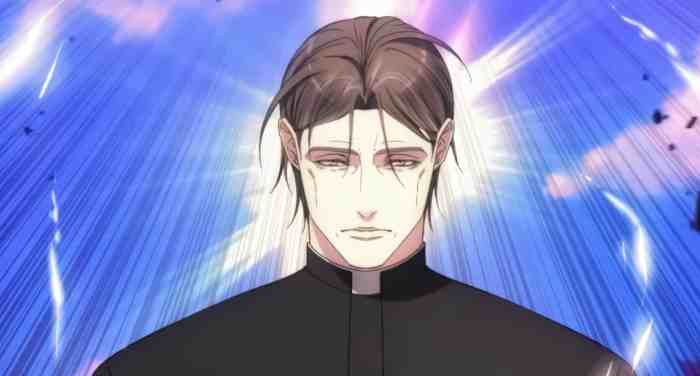
How to live as a villain ch 94 – In the gripping chapter 94 of ‘How to Live as a Villain,’ we delve into the intricate world of the villain, exploring their mindset, actions, relationships, environment, and transformation. This captivating chapter offers a profound understanding of the villain’s motivations, strategies, and the consequences they face.
Through the lens of a villainous perspective, the narrative unravels the complexities of their psyche, revealing the driving forces behind their actions. The villain’s interactions with other characters shape their trajectory, while the environment in which they operate exerts a profound influence on their development.
Villainous Mindset
In the tapestry of the story, the villain emerges as a formidable force, driven by a unique mindset that sets them apart from the virtuous heroes. Their thoughts and actions are guided by a profound understanding of human nature, an insatiable thirst for power, and an unwavering belief in their own superiority.
The villain’s perspective is often shaped by a profound sense of injustice or a twisted interpretation of morality. They may view themselves as victims of circumstance, driven to enact revenge or restore a perceived balance to the world. Their goals are often ambitious, extending beyond personal gain to encompass the domination or destruction of their perceived enemies.
Motivations and Goals
- Quest for Power:Villains are often consumed by an unquenchable thirst for power, believing that it will bring them control, influence, and the ability to shape the world according to their will.
- Revenge:A deep-seated desire for revenge can drive villains to seek retribution for past wrongs or perceived injustices. They may believe that violence or manipulation is the only way to right the scales and restore their sense of balance.
- Domination:Some villains harbor an overwhelming desire to dominate others, believing that they are superior and deserving of absolute control. They may seek to establish their authority through force, intimidation, or psychological manipulation.
- Chaos and Destruction:For some villains, the ultimate goal is to create chaos and destruction. They may delight in causing pain, suffering, and disruption, reveling in the anarchy they unleash upon the world.
Villainous Actions
In Chapter 94, the villain, Lord Maledict, unleashes his sinister plan to seize control of the kingdom. He begins by dispatching his loyal minions to infiltrate the royal palace, sowing discord and chaos among the unsuspecting populace.
Maledict’s actions have far-reaching consequences. The infiltration of the palace disrupts the kingdom’s stability, undermining the authority of the king and creating a sense of fear and uncertainty among the citizens.
Moreover, Maledict’s minions engage in acts of sabotage and violence, targeting key infrastructure and disrupting essential services. This widespread chaos weakens the kingdom’s defenses, leaving it vulnerable to further attacks.
As Maledict’s plan unfolds, he faces resistance from the kingdom’s heroes. A fierce battle ensues, with both sides suffering heavy losses. In the end, Maledict is defeated, but not before exacting a heavy toll on the kingdom.
The consequences of Maledict’s actions are severe. The kingdom is left weakened and divided, with its citizens traumatized by the violence they have witnessed. The legacy of Maledict’s reign of terror will linger long after his defeat.
In the captivating chapter 94 of “How to Live as a Villain,” the protagonist navigates treacherous alliances and schemes. Meanwhile, those seeking guidance on dental hygiene can find solace in the comprehensive article ” How to Cure Gum Disease Without a Dentist .” This expert resource empowers individuals with knowledge to effectively combat gum disease, promoting oral health and well-being.
Returning to the literary realm, chapter 94 of “How to Live as a Villain” continues to enthrall readers with its intricate plot and compelling characters.
Villainous Relationships
Villains often have complex relationships with other characters in their stories. These relationships can shape the villain’s actions and motivations, and can also provide insight into their character.One of the most important relationships for a villain is with their allies.
Allies can provide the villain with support, resources, and emotional encouragement. They can also help the villain to achieve their goals. However, allies can also be a source of weakness for the villain. If the villain’s allies are defeated or captured, it can make the villain more vulnerable.Another
important relationship for a villain is with their enemies. Enemies can provide the villain with a sense of purpose and direction. They can also be a source of conflict and tension, which can help to keep the story moving. However, enemies can also be a source of danger for the villain.
If the villain’s enemies are too powerful, they can defeat the villain and end their plans.The relationships between villains and other characters can be complex and nuanced. These relationships can provide insight into the villain’s character and motivations, and can also help to shape the story’s plot.
Allies
Villains often have allies who help them achieve their goals. These allies can be other villains, henchmen, or even ordinary people who have been manipulated or coerced into helping the villain. Allies can provide the villain with a variety of resources, including money, weapons, and information.
Chapter 94 of the popular web novel “How to Live as a Villain” is now available online. The chapter continues the story of a young man who is forced to live as a villain in order to survive. The chapter is full of action and adventure, and it will leave readers on the edge of their seats.
To read the full chapter, visit how to live as a villain ch 94 .
They can also provide the villain with emotional support and encouragement.However, allies can also be a source of weakness for the villain. If the villain’s allies are defeated or captured, it can make the villain more vulnerable. Additionally, allies can sometimes betray the villain, which can lead to the villain’s downfall.
With the latest release of how to live as a villain ch 94 , the protagonist’s journey to embrace their inner villain takes an unexpected turn. As the story unfolds, the reader is captivated by the intricate plot and complex characters, leaving them eagerly anticipating the next chapter in this captivating tale of villainy.
Enemies
Villains often have enemies who oppose their plans. These enemies can be heroes, law enforcement officers, or even other villains. Enemies can provide the villain with a sense of purpose and direction. They can also be a source of conflict and tension, which can help to keep the story moving.However,
enemies can also be a source of danger for the villain. If the villain’s enemies are too powerful, they can defeat the villain and end their plans. Additionally, enemies can sometimes outsmart the villain, which can lead to the villain’s downfall.
Villainous Environment
The environment in which a villain operates plays a crucial role in shaping their actions and development. The physical, social, and psychological aspects of the setting can influence the villain’s motivations, strategies, and overall demeanor.
In the latest chapter of the popular web novel “How to Live as a Villain,” the protagonist faces a new challenge: gum disease. As the story progresses, readers are left wondering how the villain will overcome this obstacle. While the novel’s author has yet to reveal the answer, there are several home remedies that may provide some relief, such as how to cure gum disease without a dentist . Meanwhile, fans eagerly await the next chapter to see how the villain’s journey unfolds.
The physical environment can provide opportunities and constraints for the villain. A remote and isolated setting may allow them to operate with greater freedom and secrecy, while an urban environment may offer anonymity and a wider range of targets.
Influence of Environment on Villain’s Actions, How to live as a villain ch 94
- Physical Environment:The physical environment can influence the villain’s choice of weapons, tactics, and hideouts. A forest environment may favor stealth and guerrilla warfare, while an urban environment may call for more sophisticated technology and a wider range of resources.
- Social Environment:The social environment can shape the villain’s interactions with others and their perception of themselves. A society that values conformity and order may foster a sense of rebellion and resentment in the villain, while a society that is corrupt or unjust may provide fertile ground for their criminal activities.
The latest chapter of “How to Live as a Villain” ch 94 has been highly anticipated by fans of the popular web novel. While readers eagerly await its release, Mecklenburg Mecconline offers a comprehensive guide to living as a villain, providing insights into the strategies and tactics employed by fictional antagonists.
- Psychological Environment:The psychological environment can influence the villain’s mental state and emotional development. A traumatic past or a sense of injustice can fuel their anger and desire for revenge, while a lack of empathy or a distorted worldview can lead them to commit heinous acts without remorse.
Villainous Transformation
Throughout the story’s progression to Chapter 94, the villain has undergone a significant transformation. Initially introduced as a ruthless and power-hungry individual, their motivations and actions have evolved, shaping their character and the narrative itself.
The villain’s transformation can be traced through various factors. Their personal experiences, interactions with other characters, and the consequences of their actions have all played a role in shaping their evolution. As the story unfolds, the villain’s motivations become more complex, and their actions become increasingly influenced by their desire for revenge, power, or a twisted sense of justice.
Catalysts for Transformation
- Personal Experiences:Traumatic events, betrayals, and losses have profoundly impacted the villain’s psyche, fueling their resentment and driving their transformation.
- Interactions with Others:Relationships with allies and enemies alike have shaped the villain’s worldview, influencing their decisions and actions.
- Consequences of Actions:The consequences of the villain’s actions have led to both setbacks and victories, each experience shaping their understanding of power and the world.
The villain’s transformation affects the story in numerous ways. It creates a dynamic and compelling character, driving the narrative forward through their actions and motivations. The villain’s evolution also raises questions about morality, the nature of good and evil, and the consequences of one’s choices.
Final Conclusion: How To Live As A Villain Ch 94

Chapter 94 serves as a pivotal turning point in the villain’s journey, showcasing the culmination of their experiences and choices. The chapter leaves readers contemplating the nature of villainy, the consequences of one’s actions, and the potential for redemption amidst the darkness.
Helpful Answers
What is the significance of Chapter 94 in the villain’s journey?
Chapter 94 marks a turning point in the villain’s development, revealing the consequences of their actions and the potential for redemption.
How does the environment influence the villain’s actions?
The environment in which the villain operates shapes their motivations, strategies, and the consequences they face.





